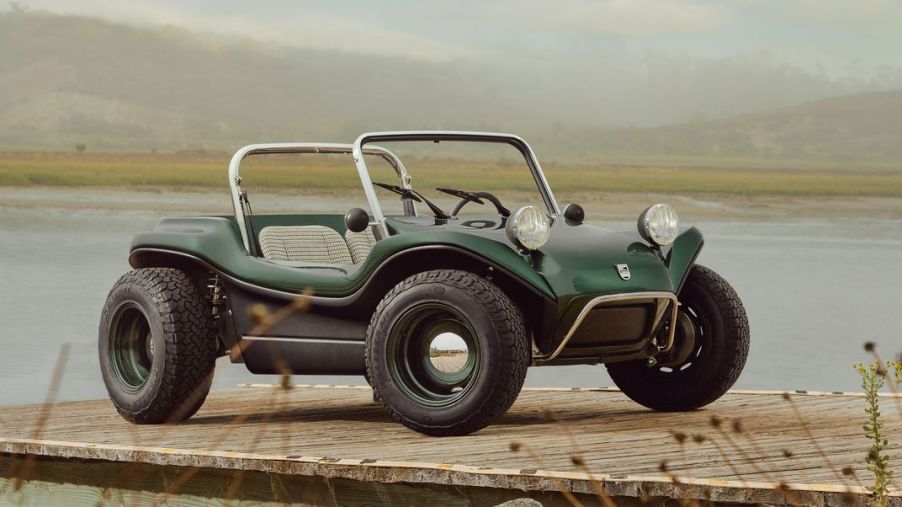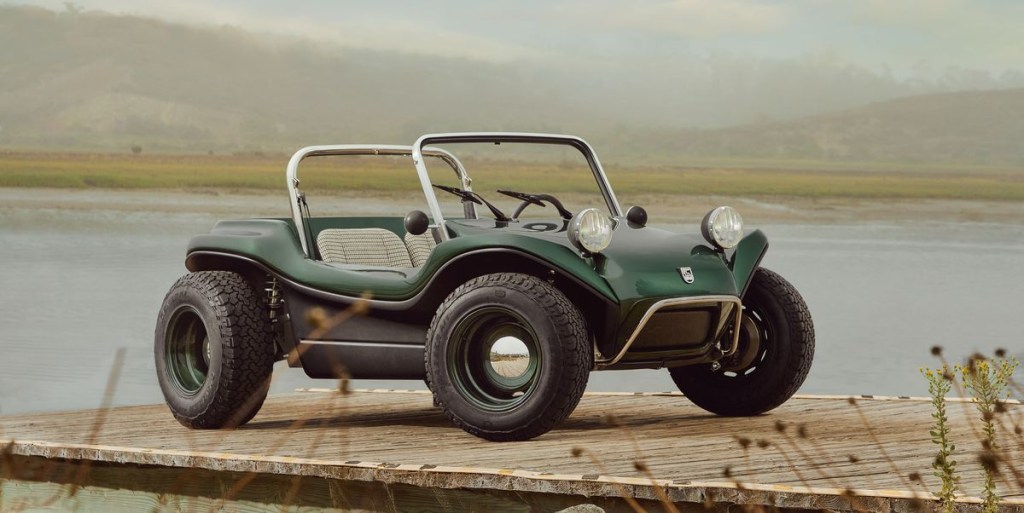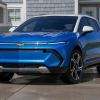
Opinion: The Meyers Manx EV Shines a Cold Light on Everything Wrong With the Current Car Market
I love Meyers Manx. While I was still too young even to know why I liked the lovely beach buggies, I loved them. Honestly, I’d rather not meet the sorry soul that doesn’t love a Manx. I, along with many others, was gutted to hear of the passing of the man himself but was gladdened by the news that someone was reviving the Meyers Manx brand. That is until the news came down detailing the new machine. The Meyers Manx EV shines a cold light on everything wrong with the current car market, and it makes me very sad.
Why is the Meyers Manx so special?
The return of the Meyers Manx to the car market was nothing short of a balm for the weary members of our current car culture when the announcement came down. Car and Driver reviewed the original fiberglass tub of Joy in 1967. The auto journos of yesteryear wrote one of the best strings of words written about the Manx: “[It is] all things to all men… more soul-freeing, leaping, bounding, uninhibited fun than anything else they’ve ever driven—on or off the road.” We beg your pardon for the needlessly exclusive language, but this is a wonderfully simple take on such a wonderfully simple machine.
The Meyers Manx sidestepped the muscle cars and low-slung sporty machines of the time that were inefficient and pricey. Not only was the Manx inexpensive and simple, but the little beach buggies took the opposite approach of the mainstream. Instead of huge boxy cars with huge boxy motors, the Manx was fiberglass, bubbly, sweet, and small. It disregarded all conventions and brought simple joy to motoring enthusiasts at a price point ($985) that allowed for widespread participation. Sadly, since the passing of the venerable Bruce F. Meyers, the brand has gone in a different direction.
Are Meyers Manx still made?
After 55 years, the Manx is back. The company has changed a bit during that time. Instead of the eager little VW powertrain that once powered the Manx, a silent electric motor now sends the buggy down the coast. Despite what you might think, the electric powertrain isn’t the part I’m worried about. EVs are in. Using EV buzz to inject new life into a legacy brand like Meyers is probably not a bad idea. Aside from the electric powertrain, the Manx 2.0 remains faithful to the original design in many ways. It remains lightweight (1,650 lbs), open, and sweetly styled.
There are two battery options: a 20.0-kWh battery with a claimed 150 miles of range or a 40.0-kWh battery with 300 miles of range. This claim is bold, considering the most efficient EVs can’t get the sort of MPGe needed (roughly 225 MPGe). The Tesla Model 3 only gets 132 MPGe at its most efficient.
So, if the powertrain isn’t the problem, what is?
How much does the 2023 Meyers Manx 2.0 cost?

The new electric Meyers Manx starts at an upsetting $74,000. I’ll allow you a moment to process that number. Let me help. For a bit of perspective, the 2024 Toyota Land Cruiser should start somewhere around the mid-$50,000 range. You could get multiple Toyota Tacomas for this number. Hell, you could buy a fleet of original Manx buggies large enough to take over a small country for $74k.
I’m aware that the grumpy autos writer complaining about overpriced vehicles is cliche. However, I’m not arguing everything was better “back in my day.” I don’t believe that. There is something in the air of the automotive space, though, that feels poisonous. Things didn’t just get a little more expensive due to the slow, cruel hands of time. Because of a mix of extenuating circumstances, the market has taken a monumental turn that serves only the very wealthy. $74k isn’t play money unless you’re Scrooge McDuck. There was a time when “regular” folks could work hard and save to buy their dream motorcycle, build a muscle car, or if you were too hard up for all that, you could build a damn Manx. What does it say to the average enthusiast when a Manx is $74,000?
The automotive market has always been a place where the super-rich were well-catered to. There were always cars set aside for them. However, the majority of the car market in America was meant for the majority of us. That feels like it’s changed. The hardest working among us have no pickup trucks to buy. The commuters have nothing comfortable and affordable to spend their time in. Now, the enthusiasts are losing ground faster than we can think.
I will always be a congregant in the house of Meyers Manx. It just sucks to watch such a friendly icon be taken from the majority and delivered to the very few on a (not even metal flake) forest-green platter.





